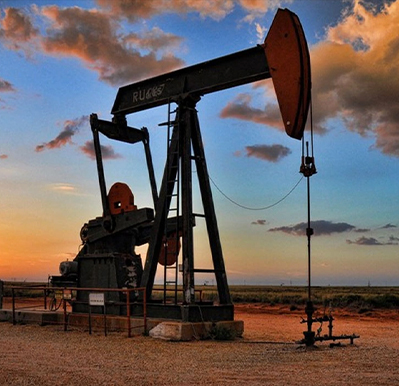- Afrikaans
- Albanian
- Amharic
- Arabic
- Armenian
- Azerbaijani
- Basque
- Belarusian
- Bengali
- Bosnian
- Bulgarian
- Catalan
- Cebuano
- Corsican
- Croatian
- Czech
- Danish
- Dutch
- English
- Esperanto
- Estonian
- Finnish
- French
- Frisian
- Galician
- Georgian
- German
- Greek
- Gujarati
- Haitian Creole
- hausa
- hawaiian
- Hebrew
- Hindi
- Miao
- Hungarian
- Icelandic
- igbo
- Indonesian
- irish
- Italian
- Japanese
- Javanese
- Kannada
- kazakh
- Khmer
- Rwandese
- Korean
- Kurdish
- Kyrgyz
- Lao
- Latin
- Latvian
- Lithuanian
- Luxembourgish
- Macedonian
- Malgashi
- Malay
- Malayalam
- Maltese
- Maori
- Marathi
- Mongolian
- Myanmar
- Nepali
- Norwegian
- Norwegian
- Occitan
- Pashto
- Persian
- Polish
- Portuguese
- Punjabi
- Romanian
- Russian
- Samoan
- Scottish Gaelic
- Serbian
- Sesotho
- Shona
- Sindhi
- Sinhala
- Slovak
- Slovenian
- Somali
- Spanish
- Sundanese
- Swahili
- Swedish
- Tagalog
- Tajik
- Tamil
- Tatar
- Telugu
- Thai
- Turkish
- Turkmen
- Ukrainian
- Urdu
- Uighur
- Uzbek
- Vietnamese
- Welsh
- Bantu
- Yiddish
- Yoruba
- Zulu
API 5CT Tubing Coupling Specifications and Applications in Oil and Gas Industry
Understanding API 5CT Tubing Couplings Essential Components in Oil and Gas Operations
API 5CT tubing couplings are critical components used in the oil and gas industry, particularly in drilling and production operations. These couplings play a vital role in connecting sections of casing and tubing used in wells, ensuring the structural integrity of pipes and preventing leaks under high pressures and adverse conditions. This article will delve into the specifics of API 5CT tubings, coupling types, standards, and their applications in the industry.
What is API 5CT?
API 5CT is a specification released by the American Petroleum Institute (API) that outlines the requirements for oil and gas casing and tubing used in drilling operations. This standard covers the manufacturing, dimensions, and performance requirements for steel pipes intended for use in the extraction of oil and natural gas. Tubing refers to the pipe used for the production of these resources, while casing is used to line the drilled well and prevent collapse during drilling operations.
Importance of Couplings
Tubing couplings are the fittings that connect individual sections of tubing or casing pipes. They are designed to provide a secure and stable connection, ensuring that the integrity of the well is maintained even under extreme conditions. Couplings are crucial for extending production lines, allowing for the efficient and safe extraction of hydrocarbons from the earth.
Types of Tubing Couplings
API 5CT tubing couplings come in various types, each designed for specific applications
. The most common types include1. Threaded Couplings These have threaded ends that allow for a tight and secure connection between two sections of pipe. Threaded couplings are widely used due to their ease of installation and reliability.
2. Welded Couplings These are installed by welding the coupling to the ends of the pipes. While they offer a strong bond, the welding process may require additional time and labor, which can increase overall project costs.
3. Slip-on Couplings These couplings simply slip over the ends of the pipes. They are easier to fit but may not provide the same level of resistance to pull-out forces as threaded or welded variants.
api 5ct tubing coupling

Each type of coupling has its own advantages and is selected based on the specific needs of the drilling or production project.
Standards and Material Grades
API 5CT specifies various grades of materials suitable for tubing and casing. The most commonly used grades include
- H40 A low-strength steel grade for light duty applications. - J55 A medium-strength steel product often used in offshore drilling. - K55 A high-strength steel often used in more demanding environments. - N80 and L80 These grades are used for intermediate to high-pressure applications, often found in sour gas operations where resistance to hydrogen sulfide is critical.
Each material grade offers specific tensile strength and corrosion resistance properties, making it essential for operators to select the right grade based on environmental conditions.
Applications in the Oil and Gas Industry
API 5CT tubing couplings are used extensively in various applications within the oil and gas industry, including
- Well Completion Couplings are essential in connecting sections of tubing critical for completing a well. - Workover Operations When existing wells require maintenance or repair, coupling systems facilitate the re-installation of tubing. - Production Couplings connect the tubing that transports oil and gas from the reservoir to the surface.
Conclusion
API 5CT tubing couplings are indispensable components of modern oil and gas operations. They ensure the safe and efficient extraction of hydrocarbons while maintaining the structural integrity of the well. Understanding the specifications, types, and applications of these couplings allows operators to make informed decisions that maximize productivity and enhance safety in the field. As the industry continues to evolve, innovations in coupling technology will further improve their reliability and performance, paving the way for greater efficiency in oil and gas extraction.
-
Well Casing Extension Couplings – Applications and InstallationNewsJun.06,2025
-
Types of Crossover Subs in Drilling & CompletionNewsJun.06,2025
-
Key Features of High-Quality Tubing Pup JointsNewsJun.06,2025
-
Installation and Maintenance Tips for Steel Couplings for PipeNewsJun.06,2025
-
How to Select the Right Pup Joint for Oil & Gas OperationsNewsJun.06,2025
-
Applications of Stainless Steel Pipe CouplingsNewsJun.06,2025







